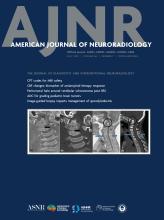Case of the Month
Section Editor: Nicholas Stence, MD
Children's Hospital Colorado, Aurora, CO
August 2016
Next Case of the Month coming September 6 …
Immune Regulation Disorder with features of Hemagophagocytic Lymphohistiocytosis
- Diagnosis/Clinical Presentation:
- While this patient does not meet all formal criteria for HLH, she has had a recurrent, underlying immune dysfunction/defect that results in a susceptibility towards autoimmunity, immunodeficiency, and episodes of hyperinflammation without ever documenting an infectious etiology (extensive workup negative, including EBC/CMB/HHV6).
- At time of presentation with brain lesions, she had been maintained on cyclosporine for her repeated episodes of hyperinflammation and immune dysregulation.
- Background:
- Hemophagocytic lymphohistiocytosis (HLH), which was first described in 1939 by Scott and Robb-Smith, is an unusual immune disease with a mortality rate of up to 70%.1
- It is a severe systemic inflammation caused by uncontrolled proliferation and activation of lymphocytes and macrophages, a so-called cytokine storm.
- The characteristic finding, hemophagocytosis, is an engulfing of blood cells by histiocytes.
- Several subtypes of HLH exist, classified as either primary or secondary.
- Primary HLH is autosomal recessive, monogenic, and caused by mutations in genes programming the cytotoxic function of natural killer (NK) cells and CD8+ T cells.
- Secondary HLH occurs in the context of an underlying immunological condition, such as malignancy or an autoimmune or autoinflammatory disorder, which is also referred to as "Macrophage Activation Syndrome" (MAS).
- Clinical manifestations in both primary and secondary HLH are often precipitated by an infectious trigger.
- There is a heterogeneous spectrum of etiologically different disorders.
- CNS involvement in HLH is common, with up to 63% having neurological symptoms, abnormal CSF, or both2.
- Imaging Findings:
- A prior case series of HLH3 described multiple nodular and ring enhancing parenchymal lesions, leptomeningeal enhancement, and diffuse edema.
- On follow-up, hemorrhagic transformation and atrophy could occur in areas affected by lesions.
- Differential Diagnosis:
- Neoplasm, including other hematopoetic malignancies such as lymphoma
- Opportunistic infections, including fungal
- Treatment:
- Workup is ongoing for underlying genetic etiologies, including CTLA-4/LRBA.
- Currently being treated with steroids and Sirolimus











